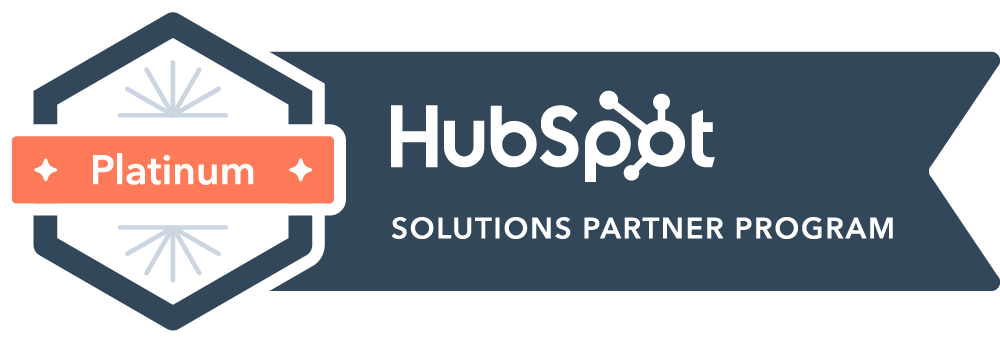When we talk about doing Marketing and Sales campaigns, in 99.999% of the cases we end up talking about the database and reports.
Why? Well, it's a bit like chicken and egg, but I can tell you that if you don't have the correct data, you can't put together good dashboards. And then if you do not know what you need to measure, you will not know what data to collect or request from your sales and Marketing team.
This is where companies mainly fail when doing HubSpot onboarding (or not doing it seriously with suitable professionals) and ends up in implementing, badly, a new tool.
And only once you have the correct data, can you think of efficient campaigns and actions, well segmented, and from which you can expect good results rates. And obviously, keep track of your KPIs and reports.
Database Definitions
About companies
For all companies that work with other companies, that is, B2B, it is essential to save the information of the company or account, at the same time as information about the contacts related to that company.
To see it with an example, let's suppose that Coca Cola is my customer and I have a history of purchases by the Marketing Manager, let's call him John. One day John leaves the company, and Sarah enters as his replacement.
If we only keep the story in John's "file". When John leaves, we lose our history with the company.
There is relevant information at the company level, such as the product line bought, how often the client buys, when the contract expires, and more. This is above who is responsible with whom we speak.
In addition, not only the Marketing department may buy us within Coca Cola, but also the Sales team under César's charge. In that case we have more than 1 contact that belongs to the same company and that contributes to our history with it.
Here is an example of information about a company.
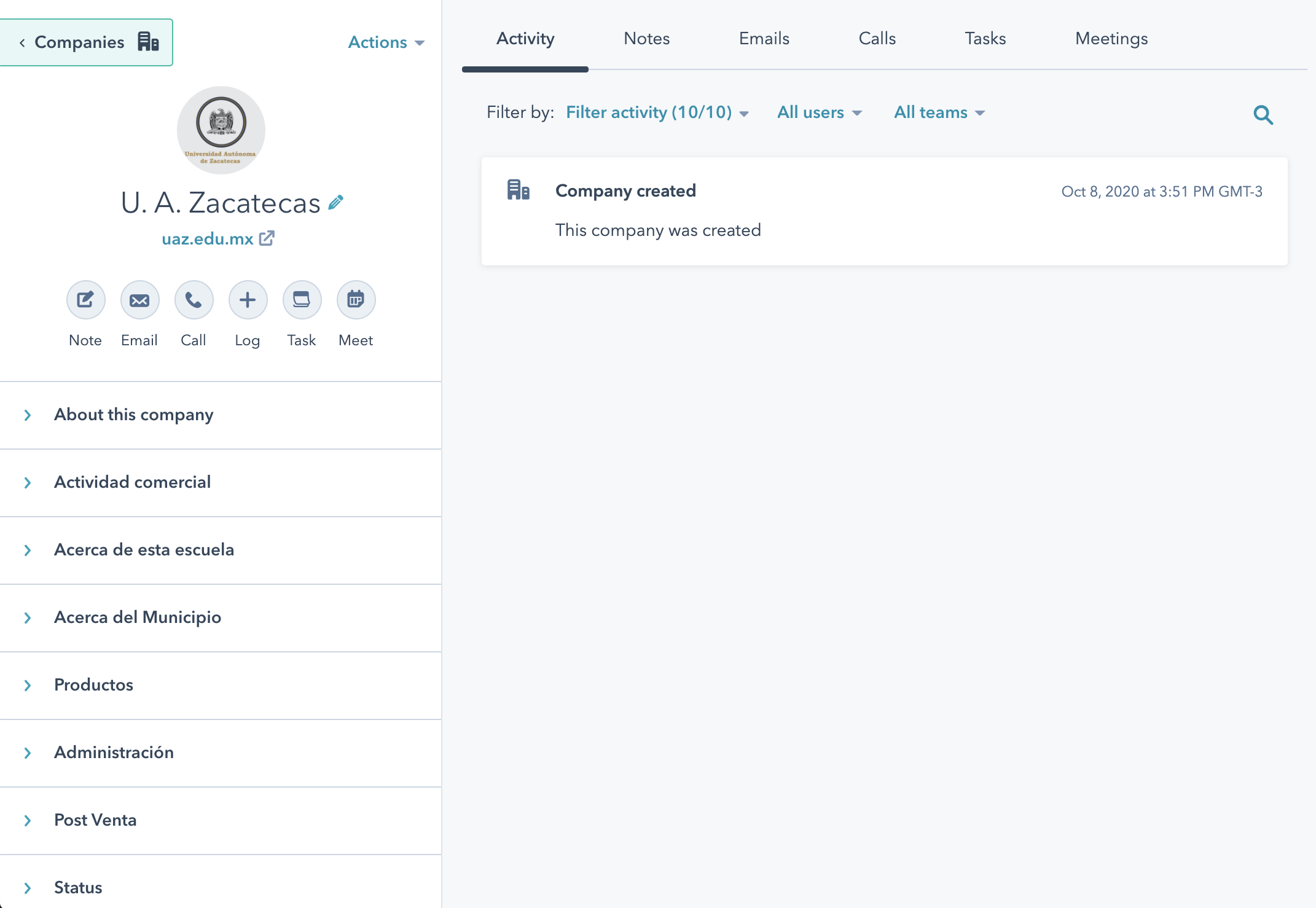
It is also essential to understand what type of company or account we keep in the CRM. It can be a potential client, a supplier, a distributor/vendor, a partner, among others. So how do we know which is which? Identifying it for example in the property "Type" in Hubspot.
About contacts
At the contact level, it is also essential to define the information that is useful both during the qualification of the contact and once they become a customer. In addition to the basic information (name, email and telephone number) it is useful to know the position or role and area in which you work. Fundamental to know the power of decision he/she has, in order to know if you are talking to the right person within the company.
Caution: When a contact is really about Business developer for our company, that is, it brings you business with several companies, you should treat it in HubSpot as an individual Company, linked to other secondary companies.
About the activity
Here it's important to take into account the activity that a contact or company must carry out to qualify as a potential customer. Completing a form, attending a webinar, downloading content from the web, starting a chat, are some of the actions that you'll want to be monitoring.
You may have heard of Lead scoring, this is important to define when starting to use CRM, although it is a process that is constantly being reviewed and updated.
Reports and Dashboards
I Like to see reports and dashboards as a visual representation of the processes you follow up within the company: demand generation, database maintenance, sales, among others.
If you still do not have your processes and basic reports defined, here is a help on what you should be looking at and monitoring.
About CRM & Database
We've talked about how fundamental it is to know the companies and contacts that you have in your database.
Here are some examples of basic reports:
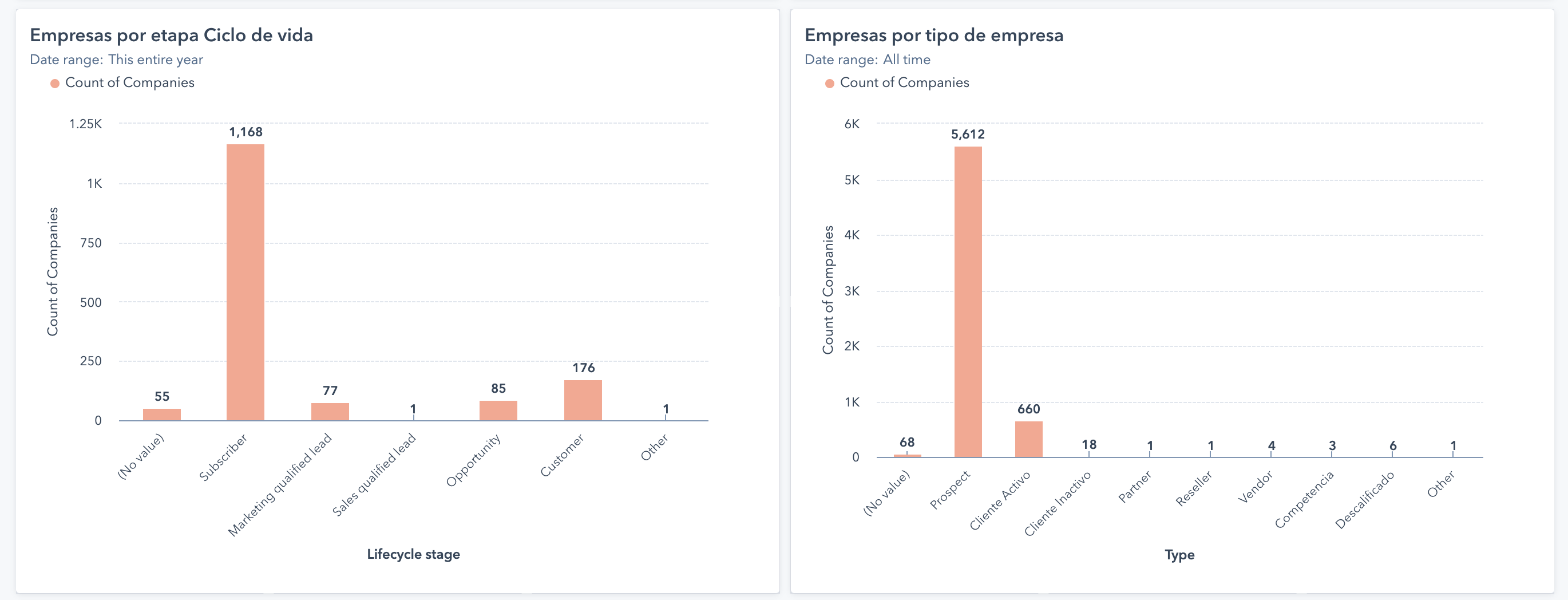
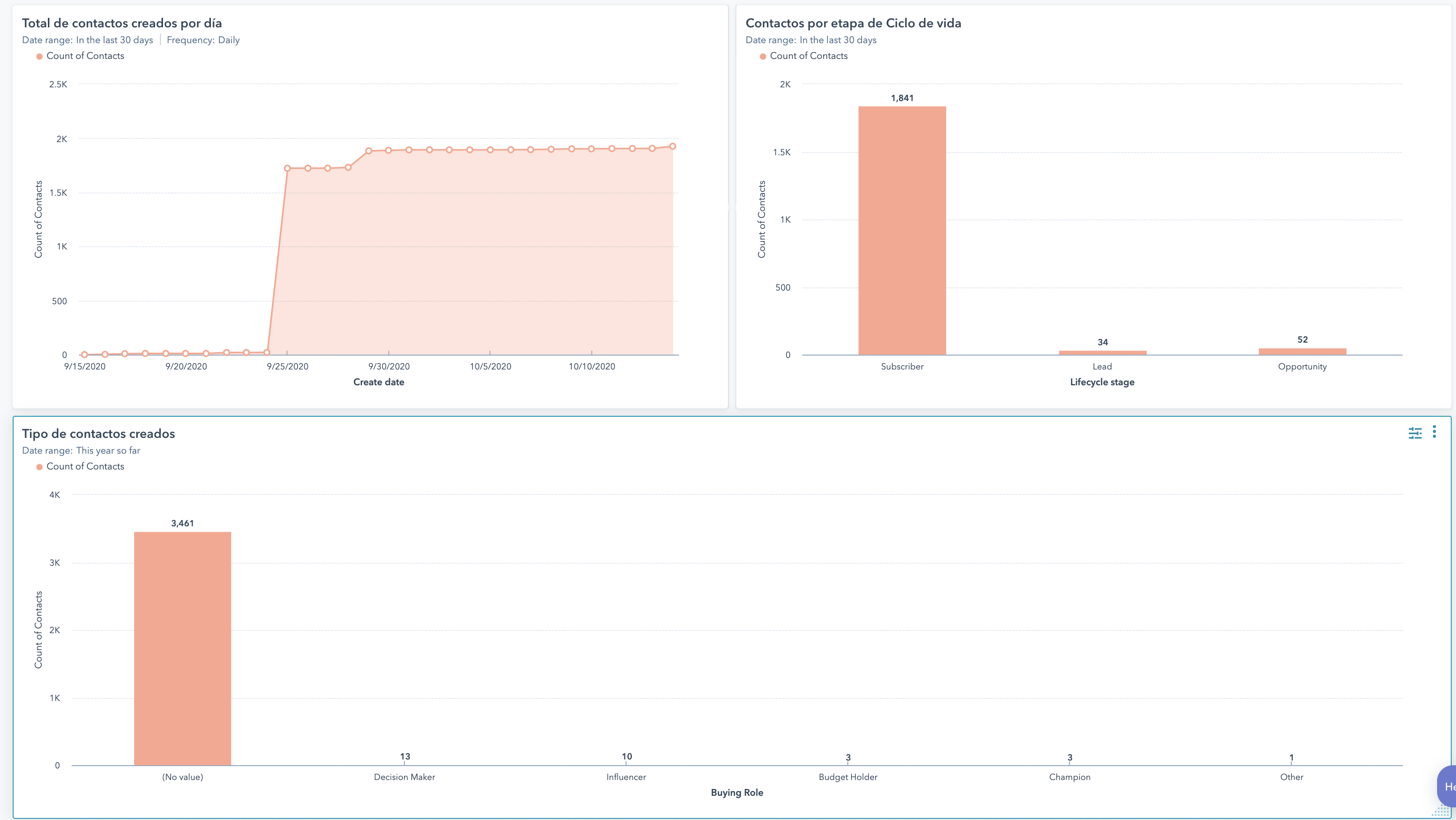
About processes and productivity
At a general level, having metrics on the evolution of the different processes of your company will greatly facilitate decision-making on time.
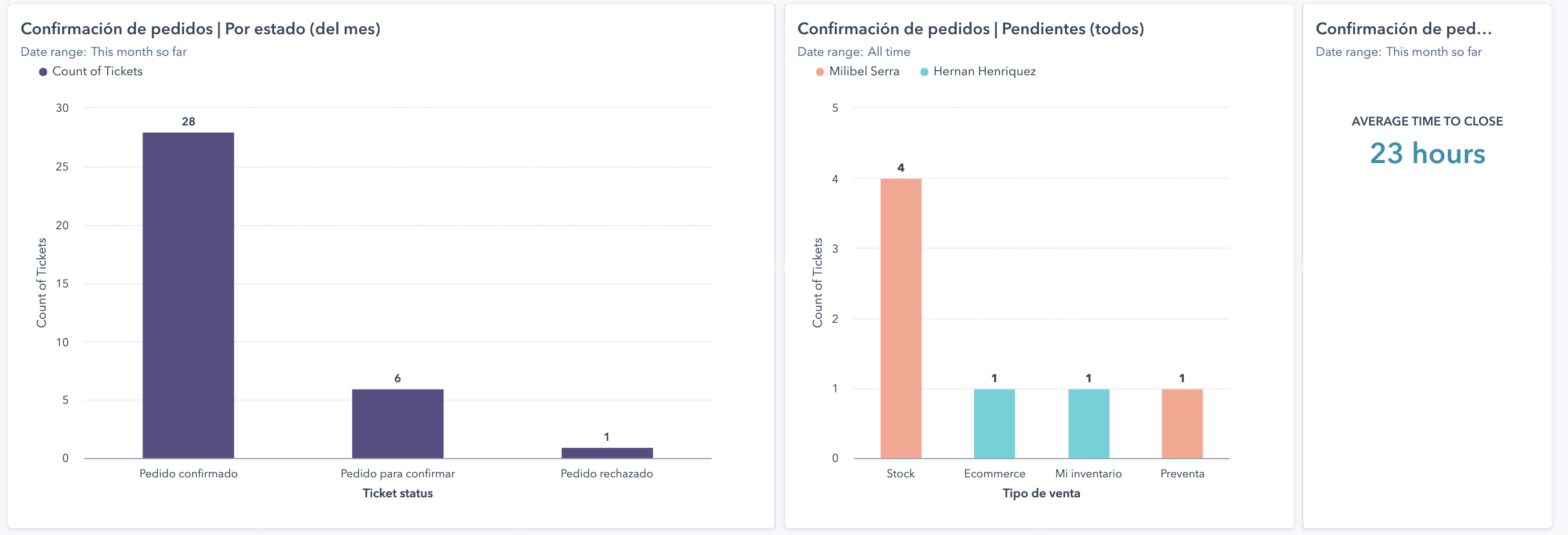
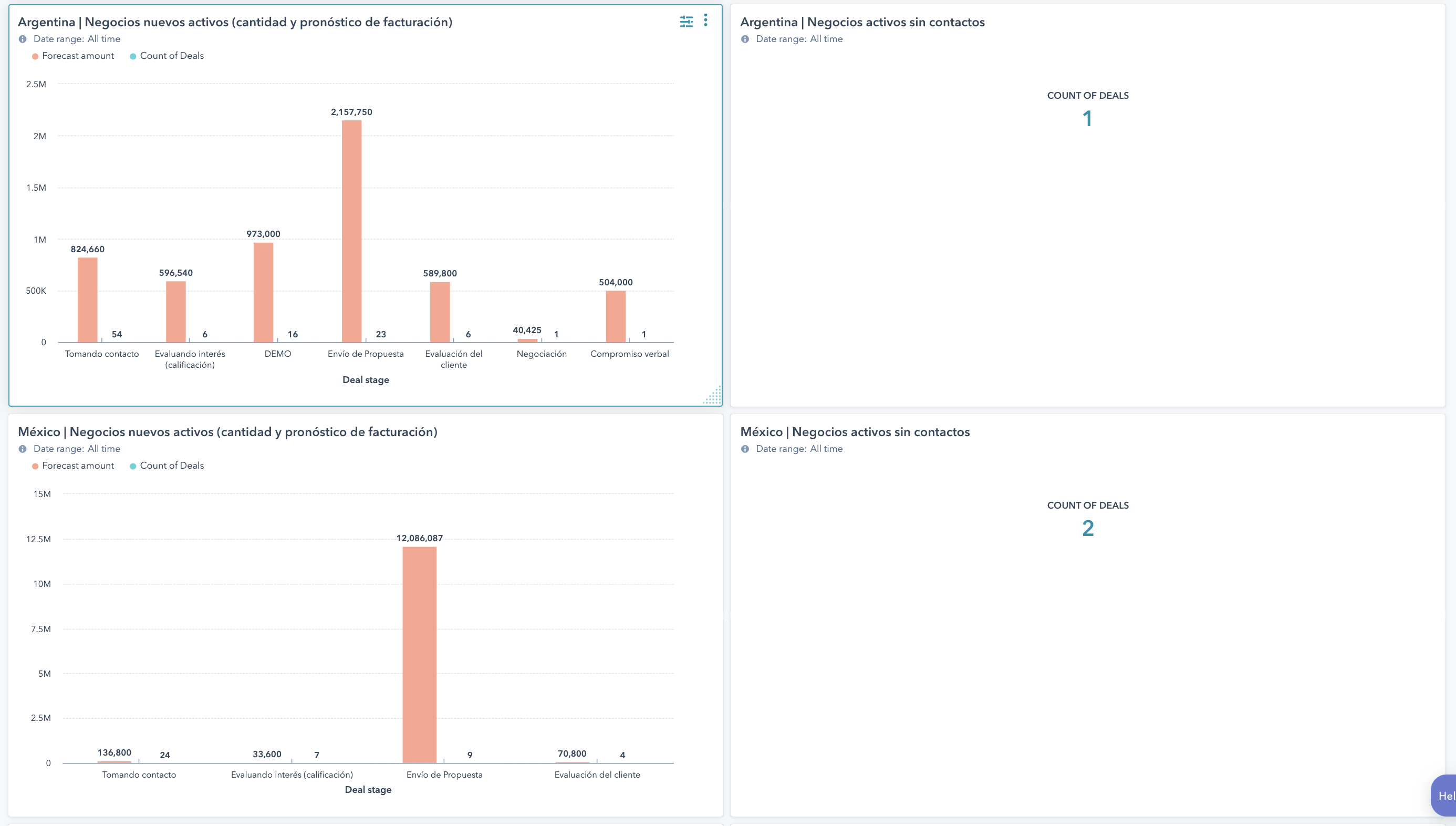

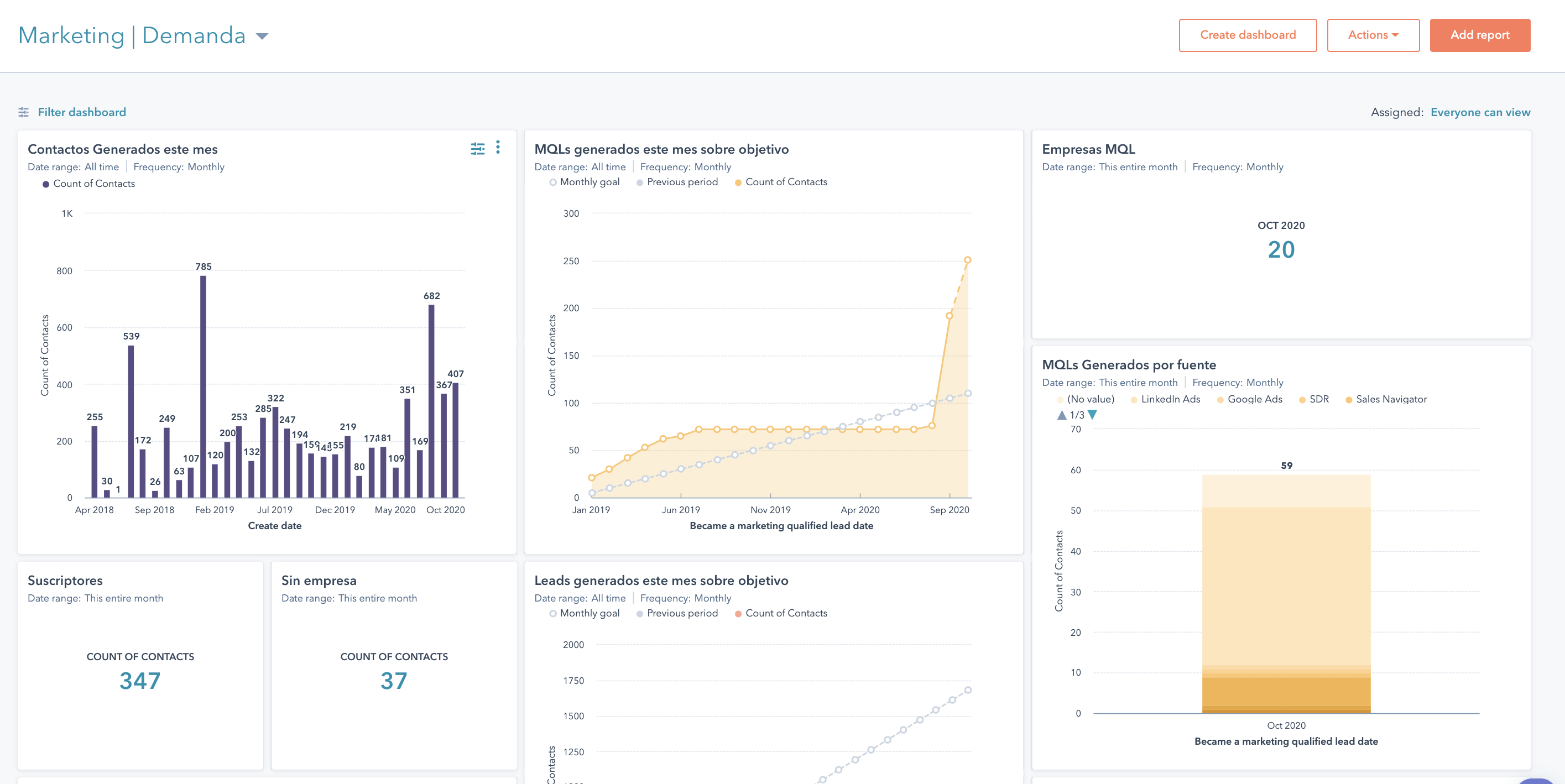
And you, do you already have your reports setup? Do you know what information you would like to obtain from your HubSpot CRM?





